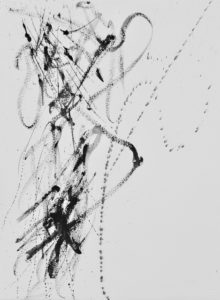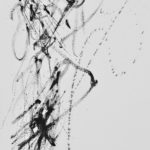I am writing this on a Monday morning, having come to my office at the university. I am not a professor, but a semester-by-semester hired hand. This is the first week of school, and in another hour, I will be going to a doctor’s appointment. Every three or four months I have a blood test and a follow-up appointment with a nephrologist. At the appointment, I am informed about the condition of my transplanted kidney.

As far as I know, the kidney and my health are fine. Both have been fine for 15 years. But the process is stressful. Transplant patients are told that in time the organ will fail. It is a fact of having a transplant.
Those of us who have transplants take our medication daily in order to prolong the life of the organ. I have never failed to take my medication. I eat healthy. I exercise. I do what I can to take care of myself and the kidney. Nevertheless, the organ will fail.
I have lived all of my life with nephrological issues. My first surgery happened when I was two months old. My most recent surgery, for a hernia, happened a couple of years ago. It was my 21st. I have never been comfortable with the process of having blood taken or meeting with a doctor. Each time I do, the edges of life fold inward, reducing my vision and my possibilities.
For those of us who carry it, despair cannot be understood through a sequence of causations. Notice I do not use the word depression. Depression is something else. We can look another direction while in despair, but people who suffer from depression cannot do the same.
I wrote to Tabby about this, and she shared a point of view I appreciate. She wrote, “Do we give in to it, give up, be afraid, or chose inaction? Or do we reach deep inside and fight for a way out and beyond the crippling moment to find hope once again?” Those are the questions, and I recognize from her tone what Tabby advises.
The fact that the world narrows when we are in a moment of despair is part of what gets to me. A sense of being terminal storms forward. It is here. It is in our face.
With it comes guilt. Guilt over having not accomplished enough. Guilt over having not lived better. Guilt over having not loved well enough. Our failures over a period of years come rushing at us—loudly, mockingly, drastically. We are faced, too, with the needle prick of our own voice that says forgive me. Forgive me, we say to ourselves. Forgive me, we say to others who cannot hear us.
This year, I have tried to give day-to-day attention to returns. Because I have sat with Tabby’s paintings on a nearly daily basis, I have lived with an insistence that I must give attention. When any of us give attention, we become aware of what we have seen. I might recognize in one of Tabby’s landscapes a place where I have fished or where I have gone for a walk. Such locations come back to us when we begin to see. We can recognize, as well, that we might not travel to certain places again or we might not sit with certain friends again. The trick of returns, however, is to stay grateful for what is and what has been and not to be overwhelmed by what is lost.
Now at the beginning of autumn, I am eager for what will return. More so than in years past, I have walked around the university, noticing students. They sit in their chosen groups, smiling or laughing with each other, sharing computer screens and phones and, more rarely, books. I do not recognize any students this year. Faces from two years ago have graduated or gone away, but these new faces hint at familiar hopes, anxieties, and anticipations of those same students who have since moved on.
As for the professors and staff—Kari wears the same coat, Gillian wears scarves every day, Laura has cut her hair short. The office doors announce the ironies and protests of years past. They range from the glib to the cynical, advocating for a world that does not exist. Some, I tell myself, “doth protest too much.” But there is something about all of this, about the office doors, the faces, the return of staff and students and all the rest that can hush despair. Seeing them can be, to use Tabby’s words, a way out.
But a way out to what? I do not know precisely, though I wish to believe toward a condition outside of ourselves. It is where we go when we ride a bicycle beside the sea or between mountains, with visions of trout and a cow painting in our head. I recognize a possibility like this in Tabby’s painting, At the End of the Day. In the painting, we see the high sweep of a light salmon colored sky. We take in what is left of the sun cresting bluish hills and daylight streaking the farthest mountains. In the foreground, acres of wildflowers and pockets of cedar trees thrive in the shadows. Although the sky dominates the painting, we begin to replace it with the gentlest of our dreams and those places where we have dreamed. As is, I am not searching for a location when I look at this painting. I am searching for what I have experienced in settings like At the End of the Day.
I am searching for where I have been suspended between the earth and sky. I am searching for where the “I” that is myself has disappeared, and the “I” that is me has been made full again. This is a direction out of despair and towards a kind of peace. This is an experience art can grant us.
I am reminded how after a positive blood report and the doctor’s playful assurance that I will “probably” live for a few more years, there is relief. I trust the rest of the day will be agreeable. I trust that tomorrow will be abundant. Yet there still exists a knuckle-hard chamber where my own voice reminds me that this peace will not last. There will be another round of tests in three or four months. The results might not be so good. This is the voice that any of us who manage long term illness must push away. Otherwise, the voice will push us out of our tomorrows, out of our sense of release and away from our better selves.
There are, of course, paintings that express despair.
We see this in works of Munch and Vermeer, of Van Gogh and Goya, among other artists. We see faces overcome with grief and bodies twisted by violence. We see rooms set with impenetrable shadows.
There are also paintings that leave space for a kind of middle way. There are landscapes cut by a single path and a person walking alone. There are street scenes where the light is colored by rain. We see a line through the sand or a way up a mountain, and we choose which way to go. These are paintings of both possibility and absence. They can break us, too, and this is true for paintings of either light or despair. I carry some of these paintings with me. I recall occasions in museums and cathedrals where I have looked at art of inexpressible beauty. It is an experience many of us have lived. I look again and again at the paintings in my home. They are like windows from which I can look and see other worlds. They are here. They are in the everyday and where I live.
In a while, I will leave the office. Most of the students will be gone by the time I leave. They will have returned to their dorm rooms or apartments or gone to meet with friends or to be outside, to walk or to ride a bicycle or to find a better place to sit. The professors, too, will be gone. They will go back to their other lives. And I will wait a few minutes longer before I go. I will hope the hallways are empty, whichever way I choose.
